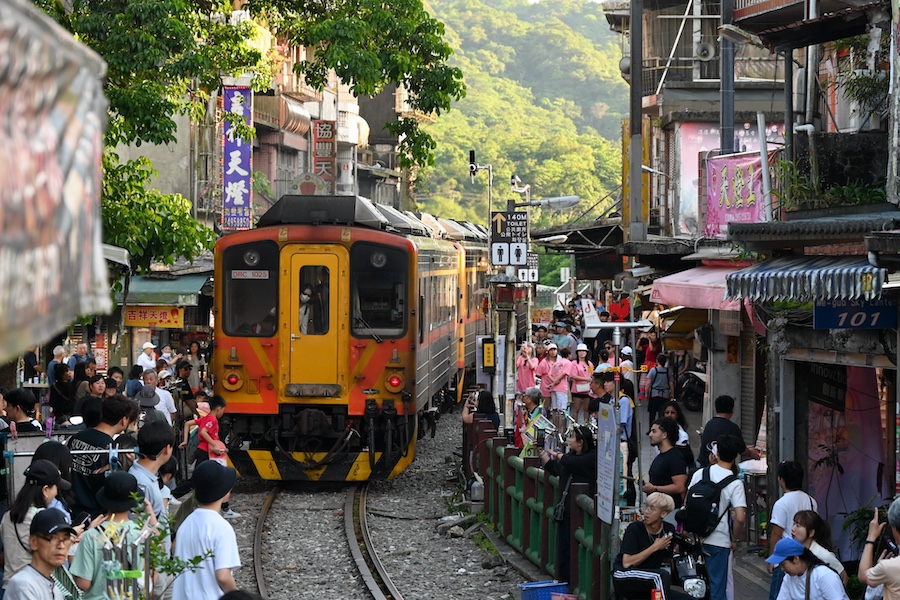
Taiwan Railways suspends Pingxi Line until January 30, 2026; bus replacement between Ruifang–Jingtong
Over a span of four days from November 17th to 20th, major railway switching construction works are being carried out at JR Shibuya Station, resulting in a partial suspension of the Yamanote Line services. The total working time amounts to approximately 52 hours, involving an aggregate workforce of about 4,600 people. But what exactly does this construction entail?
Currently, Shibuya station vicinity is undergoing what is referred to as a “once-in-a-century” redevelopment project. In line with this, East Japan Railway Company (JR East) commenced station improvement works in September 2015. The project aims to align the platforms of the Saikyo Line with those of the Yamanote Line, and to consolidate the separate inner and outer loop platforms of the Yamanote Line into a single one, in a five-step process.
The current construction is the final fifth step. It builds upon the works from January, which converted a section of the Yamanote Line into a single platform for two tracks, to now raise the elevation of the track and the platform by a maximum of about 22 centimeters and extend it towards the Harajuku direction (northward) by approximately 26 meters.
Previously, the platforms for the Yamanote and Saikyo lines were not at the same height, causing issues such as a 14% incline across the east-west connecting passage beneath both lines—posing challenges to accessibility. After construction completion, the platforms will be of uniform height, and two free passages will be established spanning a width of approximately 22 meters and a slightly increased height of about 2.6 meters.
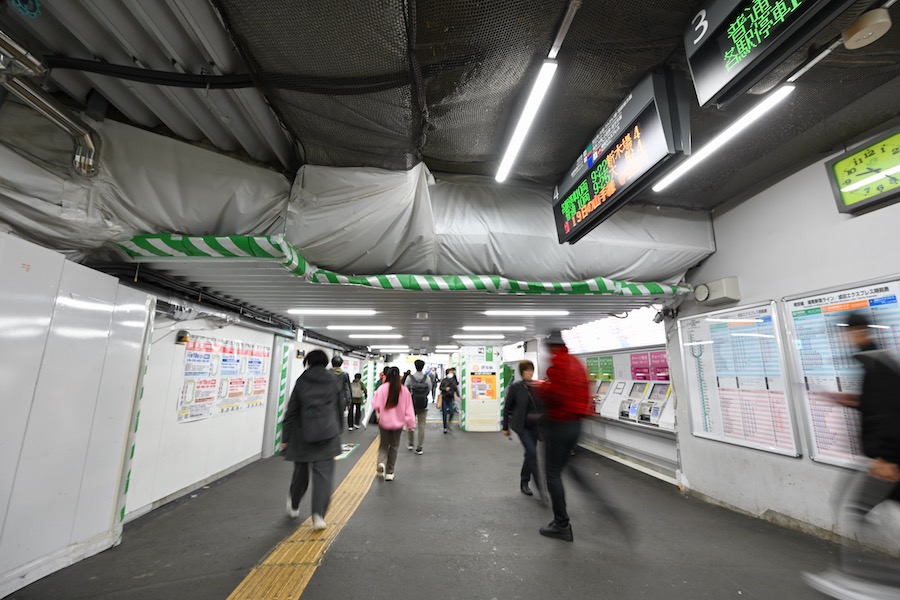 ▲ The current east-west connecting passage with a low ceiling height of approximately 2.1 meters, feeling cramped
▲ The current east-west connecting passage with a low ceiling height of approximately 2.1 meters, feeling cramped
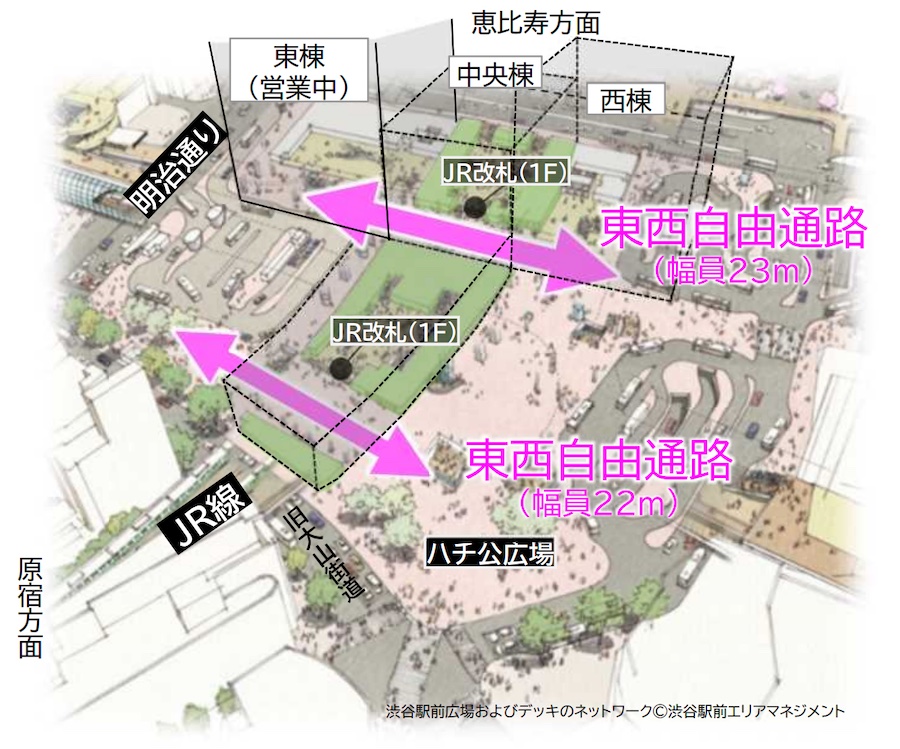 ▲ After the construction, two new east-west connecting passages will be built
▲ After the construction, two new east-west connecting passages will be built
The construction process broadly follows this order: raising the rail track elevation, then lifting and extending the platform, and finally adjusting the height of the overhead lines. Work begins with the outer loop which will be suspended on the 18th, followed by the inner loop suspension on the 19th to carry out similar works. Normal services for both inner and outer loops are expected to resume with the first train on Monday, the 20th.
According to Hiroshi Ito, Manager of the Construction Department of JR East, the rail track elevation could be done in phases over several days, through small increments of work during the night without suspending trains. However, when it comes to raising the platform, partial work would result in uneven surfaces, necessitating completion of the entire task at once. Hence, it is vital to halt train operations to secure daytime working hours.
There is also a specific reason for commencing with the outer loop: “This time, we are dividing the Yamanote Line platform in the middle and working on each half separately. The inner loop side allows for slightly more space. Since there tends to be more passengers on Saturdays than on Sundays at Shibuya station, we decided to make the wider inner loop side available to customers on Saturday (the 18th),” explains Manager Ito.
On the morning of the 18th when the construction was made public, workers were seen filling gravel (ballast) under the raised rail tracks and compacting it with heavy machinery known as ‘four-headed tampers’ on the Ebisu side (south). Meanwhile, on the opposite Harajuku side, the surface material of the platform was being removed, with workers inserting wooden materials to adjust the height. There was also much curiosity from visitors in Shibuya, as families and young people were spotted stopping on a nearby pedestrian deck to observe the activity.
JR East states that this will be the last train suspension-induced work phase for the Shibuya Station improvement efforts. The subsequent works, including converting the temporary platforms to permanent ones through normal nighttime operations, demolishing the old outer loop platform, and constructing a new exit on the south side of Roppongi Street (National Route 246), will move forward with the final completion targeted for the fiscal year of 2027. Shibuya is poised for a significant transformation, and the moment to witness its ‘changing phase’ is now.
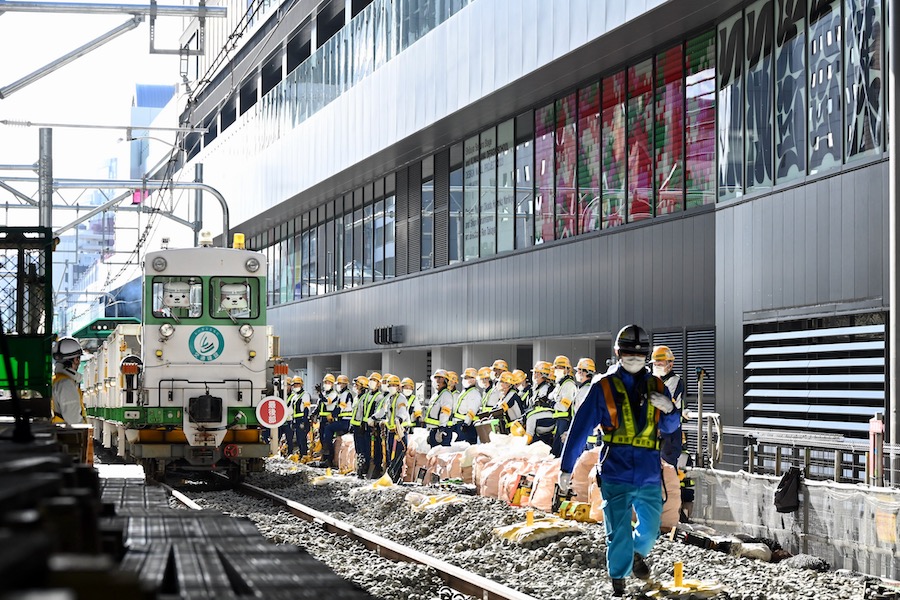 ▲ Arriving work vehicle loaded with ballast
▲ Arriving work vehicle loaded with ballast
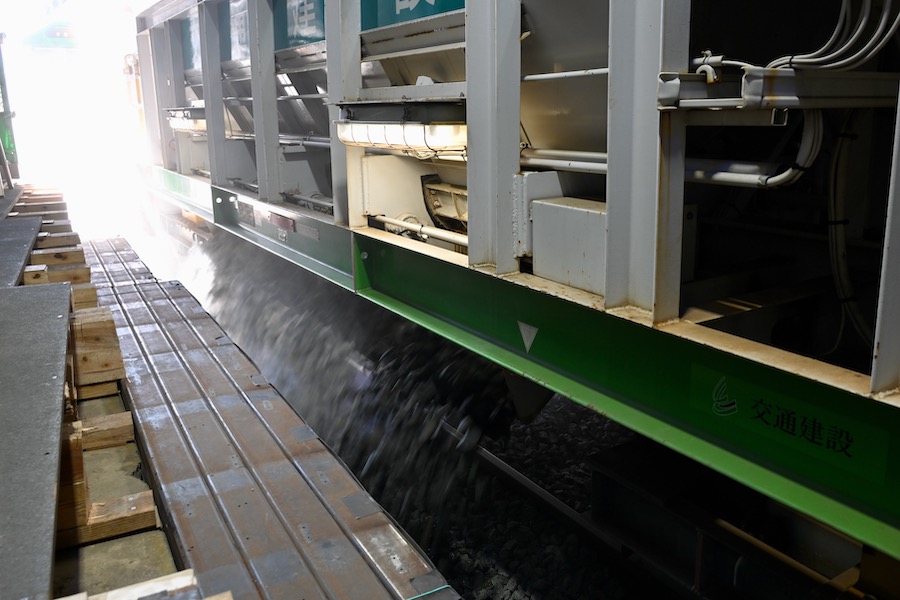 ▲ Spreading ballast on the railway track
▲ Spreading ballast on the railway track
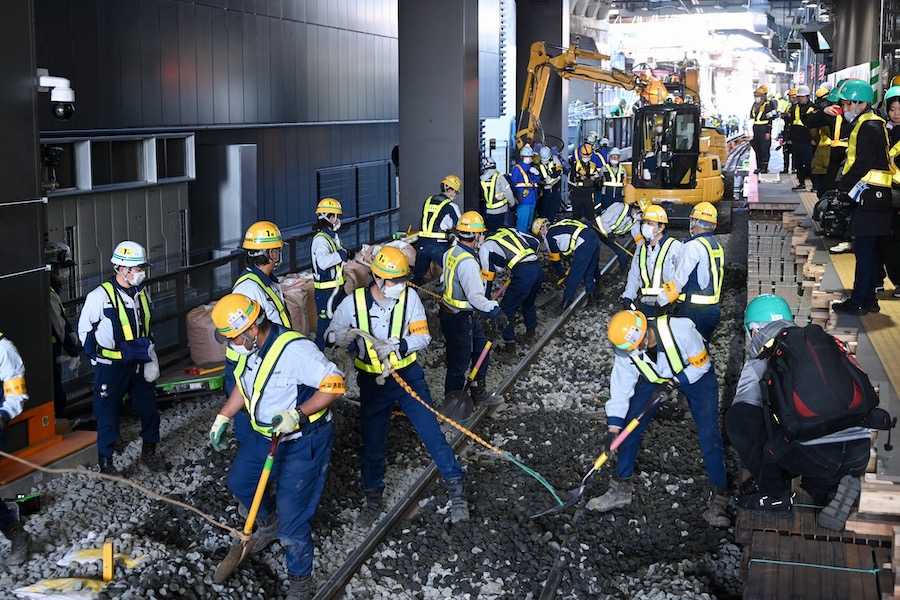 ▲ Workers leveling the spread ballast
▲ Workers leveling the spread ballast
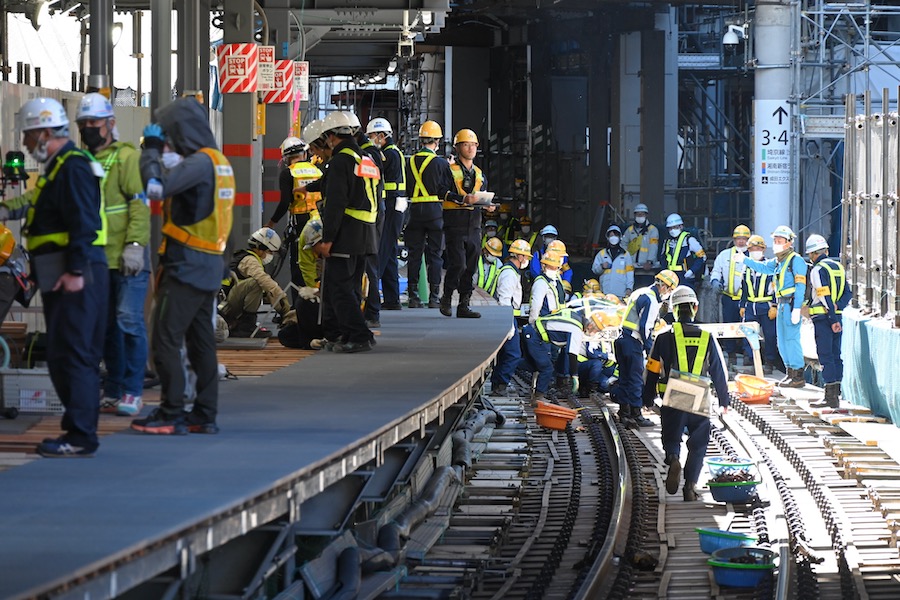 ▲ Outer loop platform surface plywood removed for elevation
▲ Outer loop platform surface plywood removed for elevation
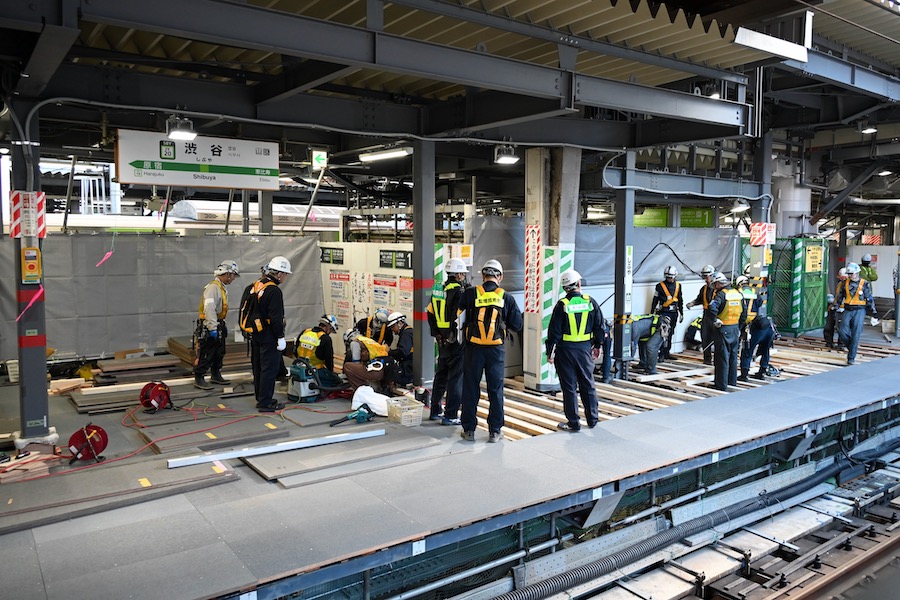 ▲ Worker adjusting platform height with wooden materials
▲ Worker adjusting platform height with wooden materials
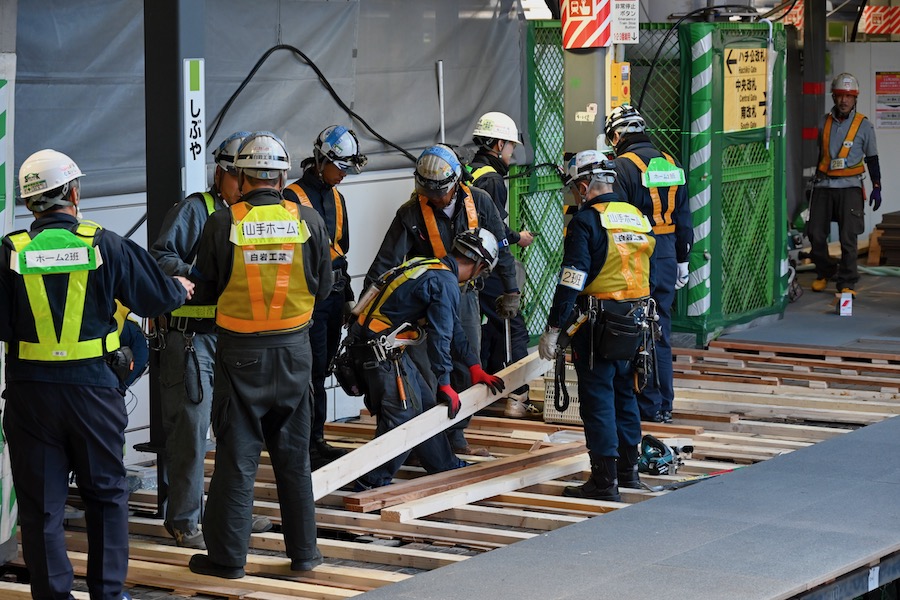 ▲ Partially elevated outer loop platform
▲ Partially elevated outer loop platform
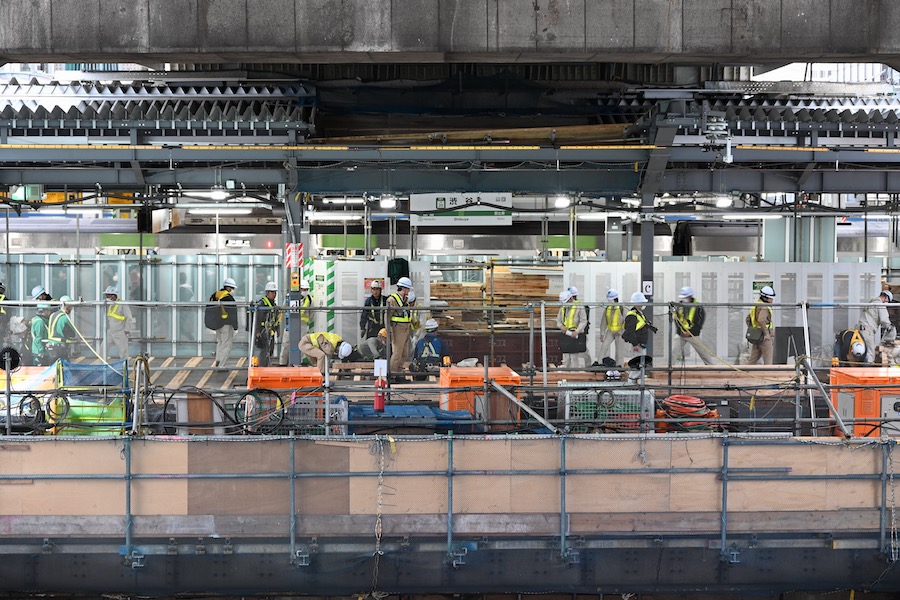 ▲ Interval of raised track section for both inner and outer loops is approximately 300 meters each
▲ Interval of raised track section for both inner and outer loops is approximately 300 meters each